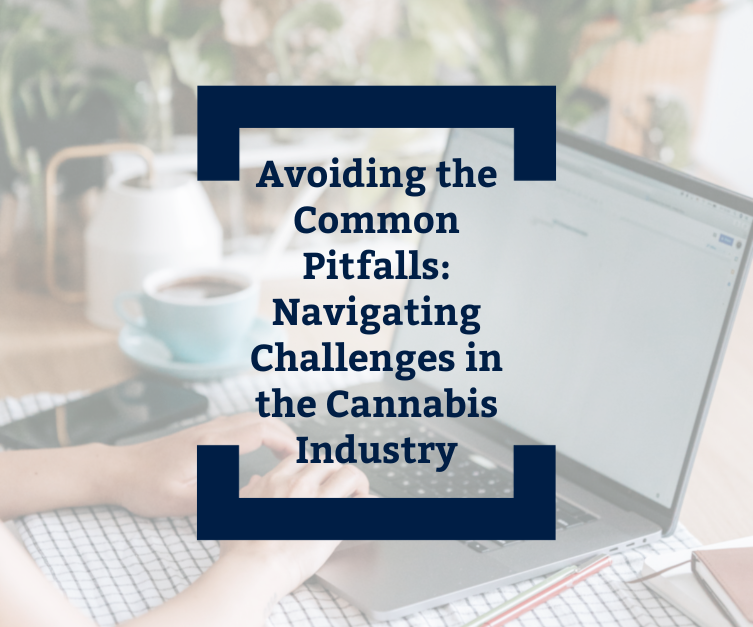Five Reasons Why Your Cannabis PR is Not Working
By Elizabeth Michael

Oftentimes, we meet clients after the fact … they crafted a release, sent it out, but no one picked it up. When your cannabis PR doesn’t work, it can be frustrating and deflating, especially since you are probably really excited about what your company is doing. We’ve got some tips to help your PR. Below, we address five common tips for why your PR is not working, and what you can do to change that.

Your release didn’t get picked up because it was an ad, not news
This is the most common pitfall we see as an agency. Our clients have a new product, service or feature and want to tell the world about it. A press release may not be the best avenue for communicating a new product, service or feature; however, exceptions do exist. If it is groundbreaking, industry changing, or truly revolutionary, then it is time for a release. If you are not sure, you can ask yourself two questions:
- What is my ideal publication to see my news in?
- Have I seen a comparable story?
If the answer to the second question is yes, then you have a good chance. But beware, some publications are “pay-to-play,” which is so very much against journalistic integrity, but alas, some publications will publish your press release for a fee. With services like PR Newswire (Cision) and Globewire, companies can pay a fee for a release to be distributed to a selected set of contacts and receive placement as sponsored content with high traffic sites (but with little SEO value since they are mainly no-follow links). If your release is truly promotional, your best bet is to distribute it “on the wire,” with a service like PR Newswire or Globewire, or to just place plain old ads. Promotions disguised as news sow the seeds of distrust that no brand should actively be trying to cultivate.

You “peacocked.”
It is easy to get wrapped up in excitement for something you are passionate about, especially if it represents your livelihood, but nothing turns off an editor more than “peacock language.” “Peacocking” is when you add many aggrandizing words into your release that try to sway positive opinion. Your release needs to deliver the information in a factual and neutral manner so that the reader can form their own opinion. Doing this is often very hard for our clients because they think, “If I am going to go through all this effort to send a release, I want it to speak highly of me!” That instinct is right, and if you are working with a good PR agent, they will follow up with the media they pitched the release to and line up interviews, onsite visits or tours to give the reporter a positive impression and experience that will, hopefully, convey in the article.

You pitched it to the wrong person
Most often you can find editor and reporter contact information online. A good rule of thumb is to also call the news desk and ask who covers the industry or topic your release falls under (called a “beat”). Once you have identified the right person, make contact before sending it to them. Gauge their interest. If they aren’t interested, ask them if they know anyone who would be. Don’t underestimate the power of a good old phone call and relationship building.

You got it in front of the wrong audience
I remember pitching a story once on financial services industry news, and it got picked up far and wide … so wide it appeared in the nation’s foremost publication on heavy machinery and equipment. Maybe they were thinking it was relevant because of lending? I am not sure, but my point is that this was not the right publication for our release. When you send out a release, and especially if you do so on the wire, you can’t really control who picks it up or what they write about it. I would say 90% of the time, they simply copy and paste the release, but sometimes the media does write an article. One way you can control the narrative is to hand-select each outlet, editor and reporter to which you send the release. A follow-up phone call always helps, as well.

You got too fancy
Please. Please. Please, do not put your release on heavily branded letterhead. I am sure it looks fantastic, but word documents with a branded background can hurt you in a few ways. First, the file size can get so large that it is hard to send and receive. Second, and most importantly, it distracts from what is most important … the text on the page. Keep your eye on the prize.
As with anything, and especially PR, it is important to stay grounded and realistic about your prospects. Oftentimes, PR can be a great success, but ends up being a flop because of very avoidable pitfalls.
Get in touch with the Bud team and learn more about our expertise, including public relations for the cannabis industry.
Contact us today at cultivate@budagency.co to schedule a meeting.






